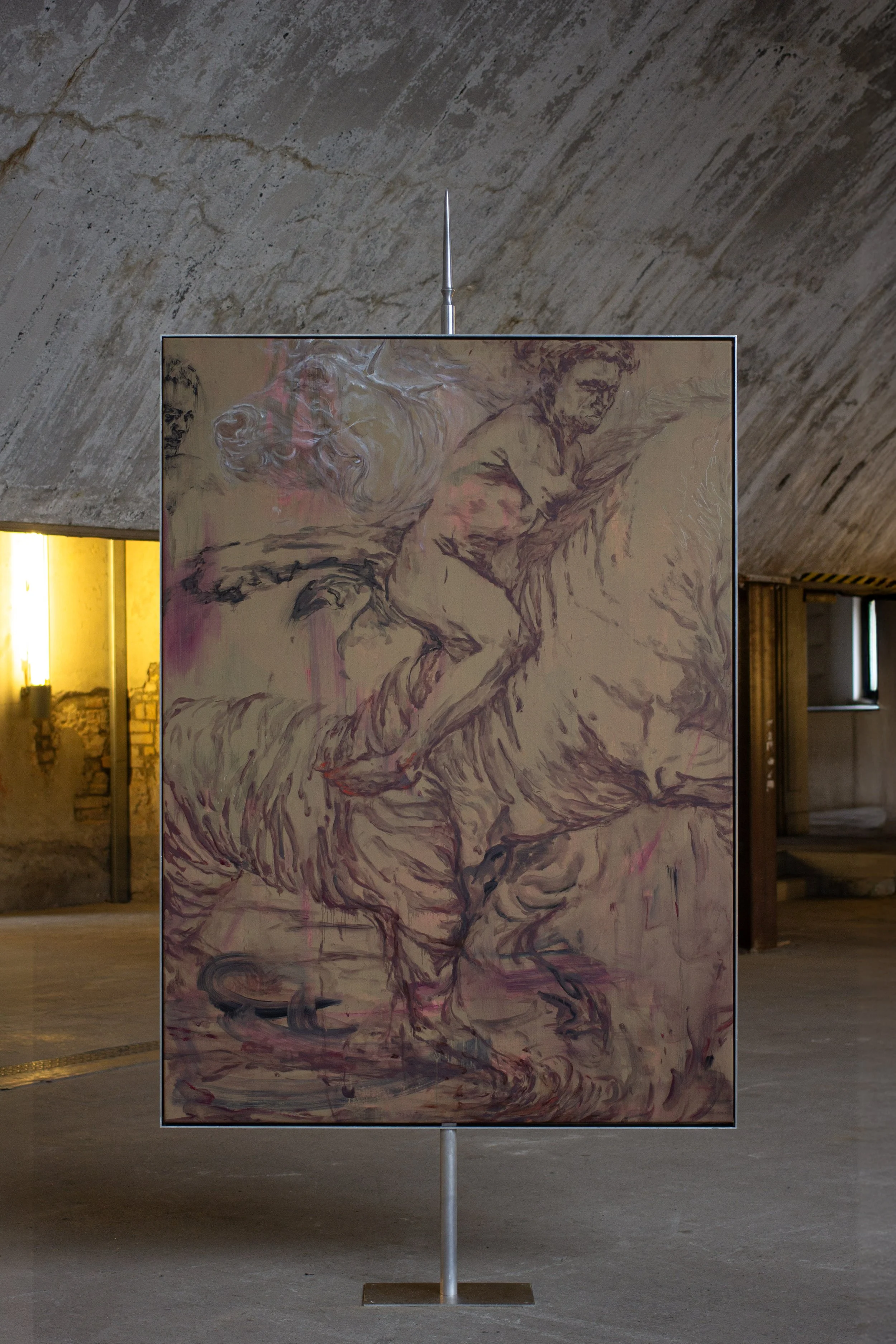
El levantamiento— the act of rising, the uprising, the revolt—is not just a historical event or political resistance; it is a sovereign principle, an impulse, an eternal act of rising against what is given. El levantamiento is the moment in which history condenses, in which tension becomes visible: between oppression and revolt, between order and chaos. What does it mean to rise up? What remains when the uprising subsides? Is it an act of liberation, or an endless repetition in the course of history? The birth of art is closely linked to the depiction of conflict. It begins in the darkness of caves, on whose walls humans and animals are depicted in hunting and fighting scenes. From the earliest prehistoric cave paintings to later heroic battle scenes and, finally, the real-time media transmission of modern wars —transforming them into global spectacles—the depiction of violence runs as a constant thread through the history of images and art.
Combat was not always a means to an end—it was also a purposeless act of overcoming anguish and transgressing boundaries. George Bataille (1897–1962) derived his concept of art from this development: art is more than mere representation; it is an act of transgression. It does not stem from the pursuit of beauty, but from a confrontation with death. He states: “Life is essentially extravagant, drawing on its forces and its reserves unchecked; unchecked it annihilates what it has. […] Anyone with the strength and the means is continually spending and endangering himself.” And art makes this excess visible. For him, it marks the moment in which humans begin to perceive themselves—through the interplay of violence and ritual—as something other than mere animals.
Why does violence become ritualized? The connection between killing, atonement, and religious elevation is deeply embedded in history, manifesting in sacrificial rites, initiation rituals, and symbolic combat. The ecstasy of violence is a moment of absolute presence. Humanity is drawn to that which brings it to the brink. Horror and delight go hand in hand.
In an era where violence is no longer confined to caves but mass-produced on screens, images of horror have changed—but the uprising of images, their relentless infiltration into political and social reality, remains omnipresent. Modern war is no longer shaped by ritual transgression but primarily by calculation and control. Societies have long sought to channel violence into structured forms to make it comprehensible and controllable. While archaic conflicts followed the principle of transgression, they were already difficult to justify. In contrast, today’s wars are bureaucratized and mechanized–systems of brutality driven by efficiency and discipline. And yet, humans remain unable to resist the attraction of horror. The question is: “what are our reasons for being seduced by the very thing that, in a fundamental fashion, signifies damage to us, the very thing that even has the power to evoke the more complete loss we undergo in death?” We crave fear because it challenges us, forcing us to confront our own limits. Is it a gamble with annihilation, a reckless search for an experience beyond the bearable—or the final attempt to grasp the ungraspable?
Text by Swantje Pieper

